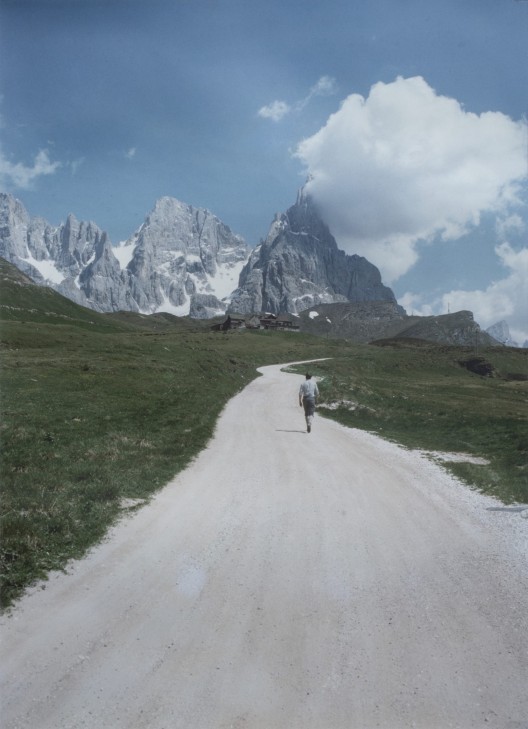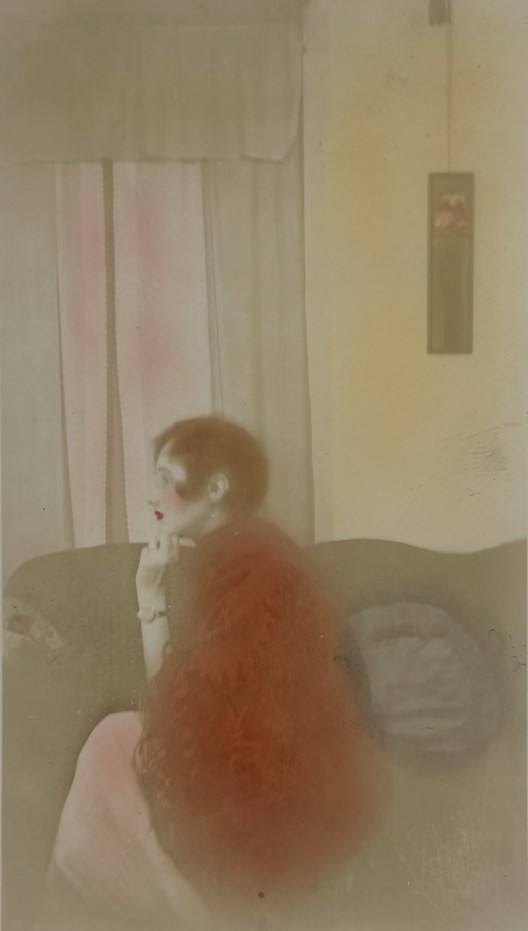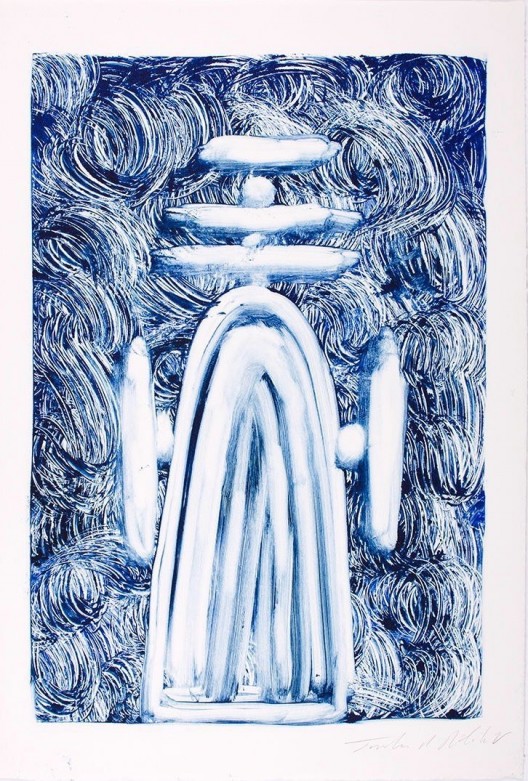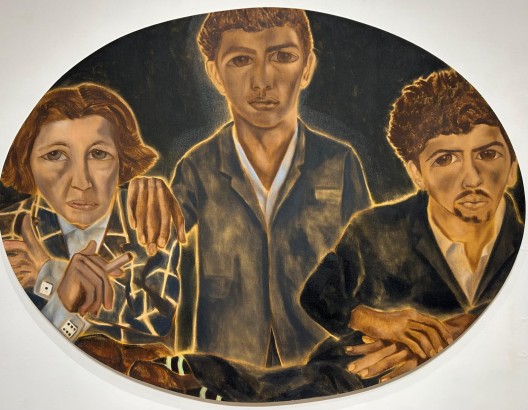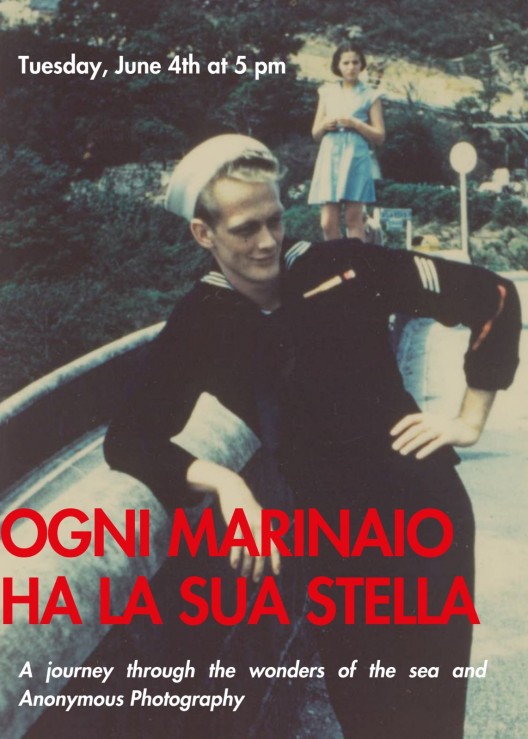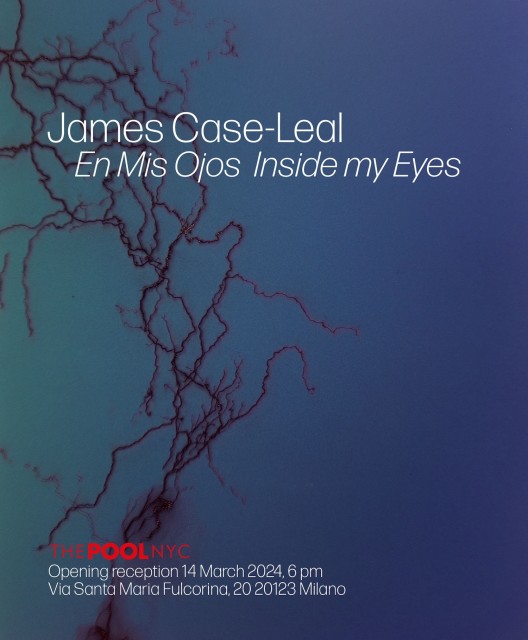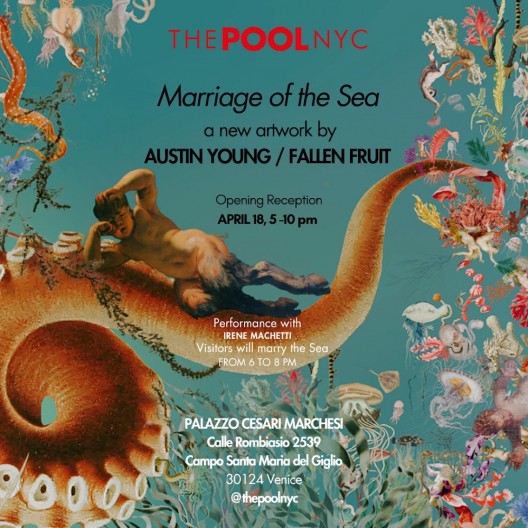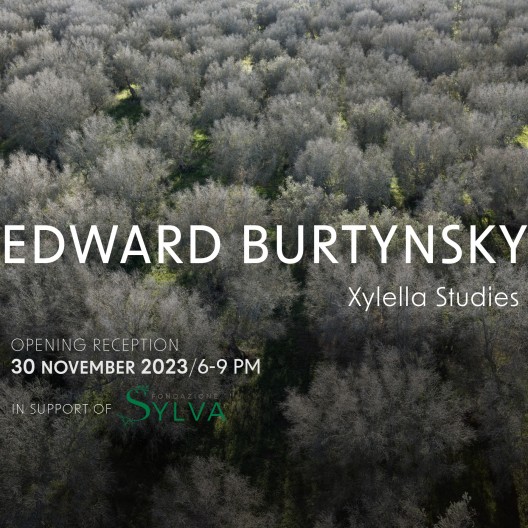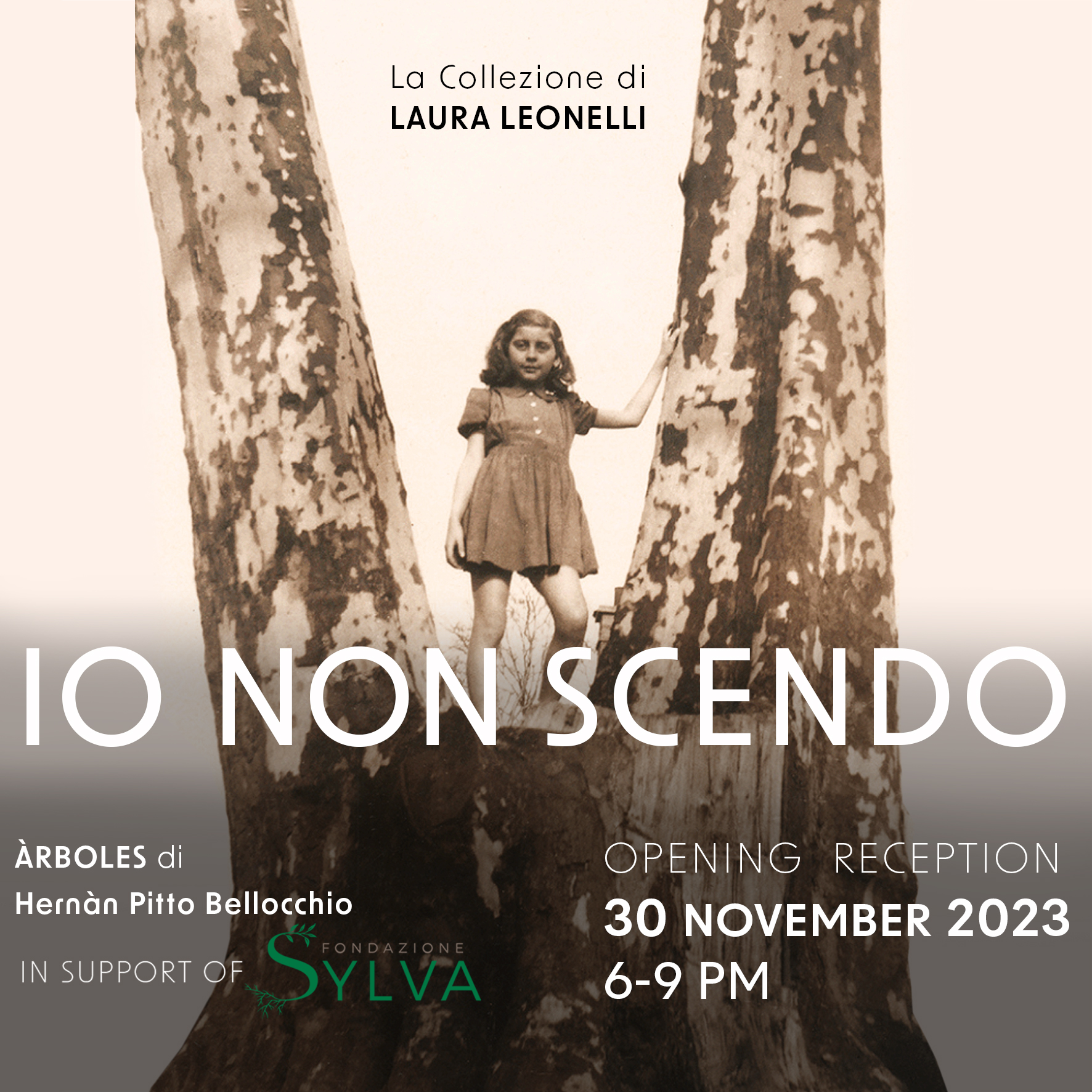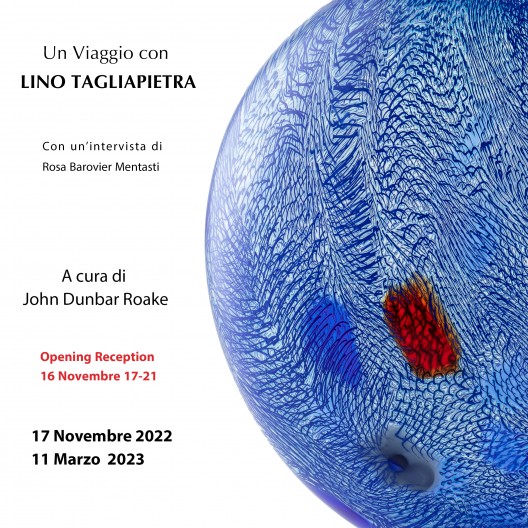Si preannuncia come un progetto con molti aspetti di originalità, quello che THE POOL NYC presenta dall’8 ottobre 2025 al 28 febbraio 2026, in Palazzo Fagnani Ronzoni nel cuore più antico di Milano (via Santa Maria Fulcorina, 20), a partire dal format che prevede due mostre in momenti diversi ma consecutivi, riunite nel titolo I tempi dello sguardo. 90 anni di fotografia italiana in due atti.
L’iniziativa, curata da THE POOL NYC, suddivisa in due capitoli dedicati ognuno a un tema particolare – il primo a Il Colore; il secondo a Il Bianco e Nero – raccoglie un totale di 194 opere di 55 autori italiani e internazionali, che hanno scritto la storia della fotografia del Novecento.
Il titolo del progetto allude alla capacità degli artisti di segnare con il loro sguardo un’epoca, “un tempo” della nostra storia, e insieme invita a ritrovare il tempo – fuori dagli eccessi di produzione visiva di oggi – per riscoprire gli straordinari talenti che hanno reso unica, anche a livello internazionale, la fotografia italiana.
In ogni capitolo della mostra, gli autori italiani dialogheranno insieme a una straordinaria selezione di artisti internazionali, tra cui Horst P. Horst, Tracey Moffatt, William Klein, Wim Delvoye, creando insoliti e illuminanti accostamenti.
Il primo appuntamento, in programma dall’8 ottobre al 20 dicembre 2025 (inaugurazione martedì 7 ottobre, dalle 18.00 alle 21.00), propone le esperienze di quei maestri che hanno avuto nell’uso del colore una delle loro cifre più caratteristiche.
Nel percorso espositivo composto da 115 fotografie, si trovano, tra gli altri, le opere di Luigi Ghirri, maestro della luce e della quiete, di Giovanni Chiaramonteche si muove a Venezia per catturare i luoghi più nascosti della città, di FrancoFontana che proprio attraverso il colore plasma il paesaggio, dalle visioni urbane geometriche degli anni ’70 fino alla sensualità astratta della serie Piscina, ai paesaggi italiani trasfigurati in campi cromatici.
La mostra prosegue con Guido Guidi che fa della fotografia un atto di attesa, con Mario Schifano, irriverente e sperimentale, che opera con la stessa libertà creativa con cui ha interpretato la pittura, mentre Paolo Gioli, l’alchimista, pur partendo da materiale sensibile fotografico, lo considera una “materia” da plasmare e manipolare.
Se da un lato, Leonardo Genovese cattura frammenti di sogno attraverso una luce feroce e rivelatrice, la “controra” lucana, che incide i corpi e deforma le apparenze, Rita Lintz, invece, trasforma gli scarti in reliquie: gli stracci diventano tappeti e il rifiuto si fa bellezza.
Il primo atto della rassegna si completa con gli scatti di artisti internazionali, tra cui Denis Brihat, Wim Delvoye, Claus Goedicke, Béatrice Helg, John Hilliard, Tracey Moffatt, Jiang Zhi, Wang Qingsong.
Il secondo episodio – dal 16 gennaio al 28 febbraio 2026 (inaugurazione giovedì 15 gennaio) -, dedicato al Bianco e Nero, prende avvio dal Futurismo di Renato Di Bosso, seguito dal Neorealismo di Alfredo Camisa, passando per le sperimentazioni formali del primo Mario De Biasi, quindi approdando agli straordinari capitoli del realismo astratto e magico di Mario Giacomelli e Antonio Biasiucci, che insieme esplorano le tracce della cultura contadina nel sud Italia, dove riti e memorie diventano oggetto da interrogare, in un dialogo crudo e spirituale con l’identità collettiva.
Mario Giacomelli si presenta con un triplice racconto: i ritratti degli esordi parlano dell’uomo attraverso una luce primordiale; le nature morte diventano esercizi domestici di poesia visiva; i paesaggi si trasformano in scenari cosmici ricchi di segni.
Franco Vaccari trasforma il banale in significativo, il marginale in poetico, e il quotidiano in arte. La sua fotografia è un manifesto che anticipa molte delle riflessioni contemporanee sull’arte partecipativa, sulla fotografia come documento, e sull’identità collettiva.
Mario Cresci cattura l’essenza della memoria e dell’identità, con uno sguardo che attraversa paesaggi e interni popolari, traducendo in immagini le tracce sottili di culture sospese tra tradizione e mutamento. Luigi Erba lavora per ripetizione e variazione, costruendo griglie sottili in cui lo spazio si sfalda in segni minimi che rimandano a un reale ormai lontano.
Le opere di Andrea Galvani sono costruzioni concettuali che evocano freddezza e inquietudine; le sue immagini riflettono sull’ambivalenza dell’intelligenza e sull’ambiguità del male come struttura razionale.
Anche per questo secondo momento espositivo, si instaurerà un dialogo con fotografi internazionali, tra cui Elliott Erwitt, Jan Groover, Horst P. Horst, Michael Kenna, William Klein, Minor White.
Durante il periodo di apertura delle mostre, Palazzo Fagnani Ronzoni ospiterà una serie di eventi collaterali, come incontri, talk, presentazione di libri, serate a tema con artisti, storici e critici della fotografia.
ARTISTI:
Vincenzo Castella, Giovanni Chiaramonte, Mario Cresci, Cuchi White, Cosimo Di Leo Ricatto, Franco Fontana, Vittore Fossati, Andrea Galvani, Leonardo Genovese, Luigi Ghirri, Luca Gilli, Paolo Gioli, Claudio Gobbi, Guido Guidi, Luisa Lambri, Rita Lintz, Marcello Mariana, Brigitte Niedermair, Mario Schifano, Davide Tranchina, Luigi Veronesi, Marco Zanta, Denis Brihat, Wim Délvoye, Claus Goedike, Béatrice Helg, John Hilliard, Tracy Moffat, Jian Zhi, Wan Qingsong.
La fotografia anonima racconta il fascino degli Stati Uniti
Immagini selezionate da Francesca Malgara
Nel 1835, quattro anni prima che a Parigi venisse annunciata l’invenzione della fotografia, Ralph Waldo Emerson, filosofo e poeta americano, aveva predetto: «Our age is ocular». La nostra è l’età degli occhi, l’età dello sguardo che tutto vuole scoprire e conservare, da quando non solo è apparsa la fotografia, ma da quando nel 1888 George Eastman, fondatore dell’impero Kodak, ha reso la stessa fotografia alla portata di tutti. Democrazia della bellezza, democrazia del ricordo, democrazia dell’essere qui e ora. Le ottanta immagini anonime americane che la galleria THE POOL NYC presenta, e che sono state scelte da Francesca Malgara, raccontano lo straordinario sodalizio che dalla metà dell’Ottocento agli anni ’60 ha fatto della cultura degli Stati Uniti una cultura “ocular”, una festa quotidiana dove ogni volto, ogni corpo, ogni incontro, ogni sorriso, ogni impronta, ogni frontiera, ogni bacio è diventato immagine.
Da questa scioltezza visiva, da questa immaginazione costantemente all’erta, ma anche da questa innocenza che senza pretese artistiche registra la vita, nasce uno stile unico al mondo. Uno stile che si è nutrito di grande cinema hollywoodiano e che i grandi fotografi dagli anni ’50 agli anni ’70 hanno fatto loro. Nella ricchezza di riferimenti e di possibili citazioni THE POOL suggerisce un gioco: riconoscere in queste immagini anonime una possibile origine “colta”. Gli indizi sono moltissimi e, ispirandosi al principio dell’equivalent di Alfred Stieglitz, si possono intravedere tracce di Dorothea Lange, Walker Evans, Robert Frank, Diane Arbus, William Eggleston, Joel Peter Witkin, Mary Ellen Mark, Andy Warhol. Nel cielo infinito delle immagini cartacee, prodotte dalla fine dell’Ottocento all’avvento del digitale, le fotografie anonime sono immagini “equivalenti”, appunto, perché una fotografia anonima, spesso, è un piccolo capolavoro.
THE POOL NYC presents Tasso’s Game, a solo exhibition by Tristano di Robilant, a multifaceted artist who lives and works between Murano and Ripabianca, two places renowned for their glass and ceramic craftsmanship.
For the Milan exhibition, di Robilant showcases a collection of nine glass sculptures created in Murano at the Anfora furnace, along with a series of monotypes printed in Verona at the Berardinelli printmaking studio.
The exhibition’s title, Tasso’s Game, draws inspiration from Torquato Tasso’s life. The poet, in his wandering and tormented existence, sought refuge in the timeless stillness of a shaded cloister. Caught between his search for inner order and his longing for freedom, Tasso found solace in retreat—a space suspended between reality and imagination.
The verse “È lieta primavera”, from Rime d’amore, evokes an illusion of serenity and renewal, which is reflected in the delicacy and colors of di Robilant’s sculptures. Just as the poet longed for a place of peace and shadow, the artist’s works, despite their luminosity and lightness, carry a fragile soul, balanced between the visible and the invisible.
In this interplay of light and shadow, form and dissolution, the sculptures become what the artist himself describes as “emotional landscapes and imaginary architectures”. They emerge from a deep exploration of his inner world and an ongoing dialogue with the “double” that exists within us all. Each piece is a meditation on the nature of memory and imagination, an invitation to explore realms suspended between dream and reality.
Tristano’s sculptures are defined by harmonious yet enigmatic forms, floating in space, weightless and transparent. Glass is not merely a medium for him; it is a language in itself, capable of conveying transparency, fragility, and suspension. These elements are essential to understanding his artistic vision, which is built on a constant tension between the solidity of material and its apparent lightness.
Di Robilant’s creative process begins with an idea that quickly translates into a drawing—an instinctive, direct gesture that then takes three-dimensional form in the furnace. It is in this transformative moment, when fire animates the glass at its highest tension, that the artwork comes to life. The essence of his art lies in this balance between concept, form, and process, offering a unique sensory experience.
For over twenty years, the artist has collaborated with the Anfora furnace, first with master glassmake Andrea Zilio and now with Andrea Salvagno. This same artistic vision extends to the series of monotypes created in collaboration with the Berardinelli Art Printmaking Studio. These oil-based works on paper, derived from plexiglass matrices, evoke imaginary landscapes that mirror the fluidity of his glass forms. Once again, di Robilant’s focus on the construction of form and its relationship with space and light is evident—an homage to the lessons of architecture critic Reyner Banham, whom the artist studied under at the University of California, Santa Cruz.
SOLO EXHIBITIONS
2025 TASSO’S GAME, THE POOL NYC, Milano
2024 Tristano di Robilant: Milestones, Robilant+Voena, New York, USA
2023 Poets, Tristan Hoare Gallery, London, UK
Beyond the Water, Venice Glass Week, Istituto Veneto di Scienze, Lettere ed Arti, Venice
2022 Galassie Peculiari, Museo della Ceramica Ettore e Marco Levi, Mondovì
2020 The window speaks to me, Venice Glass Week, Venice, Italy
2019 Youth, Tristan Hoare, London, UK
2018 Tarquinia, The National Exemplar, New York, USA
Gioventù, MUSINF, Senigallia, Italy
2017 Evento di Luce, Venice Glass Week, Museum of Palazzo Mocenigo, ItalyGLASS (with Hanno Otten), Priska Pasquier, Cologne, Germany
2016 Tristano di Robilant, Museum of Contemporary Art San Diego, USA
Tristano di Robilant, L’immaginazione e il suo doppio, Intragallery, Naples, Italy
2015 Teste, Galleria Alessandra Bonomo, Rome, Italy
2014 Parapetto (with Enzo Cucchi), The National Exemplar, New York, USA
2013 Forms (with Justin Adian), The National Exemplar, New York, USA
2012 White River, Faggionato Fine Art, London, UK
2011 Galleria Bonomo, Bari, Italy
2010 Water-Point, Faggionato Fine Art, London, UK
2009 Vetro, Galleria Valentina Bonomo, Bari, Italy
2007 Tristano di Robilant, Museo Boncompagni Ludovisi, Rome, Italy
2006 Dwight Hackett Projects, Santa Fe, New Mexico
2001 Sette sculture, Paolo Curti & Co., Milan, Italy
Tristano di Robilant, Annina Nosei Gallery, New York, USA
1998 Lance Fung Gallery, New York, USA
1993 Holly Solomon Gallery, New York, USA
SELECTED GROUP EXHIBITIONS
2023 Oblique Magie del Tempo, Museo Archeologico di Santa Scolastica, Bari, Italy
José Angelino e Tristano di Robilant, Galleria Alessandra Bonomo, Rome, Italy
2022 Oro e Arzento, THE POOL NYC, Palazzo Cesari Marchesi, Venezia
2019 Botanica, Tristan Hoare, London, UK
Il mestiere delle arti, Museo Nazionale di Ravenna, Ravenna, Italy
Venice Works, Beatrice Burati Anderson Art Space & Gallery, Venice, Italy
2018 Nuova terra antica, La Vallonea, Capalbio, Italy
2013 Ceramics, Rhona Hoffman Gallery, Chicago, Illinois, USA
2006 92nd Street Y Poets’ Theatre, New York, USA
2002 Welcome, Palazzo delle Esposizioni, Rome, Italy
1996 XII Quadriennale Nazionale d’Arte, Rome, Italy
COLLECTIONS
Museum of Contemporary Art San Diego, San Diego, USA
MAXXI Museum, Rome, Italy
Museo del Vetro, Murano, Italy
Buffalo AKG Art Museum, Buffalo, New York, USA
Sol LeWitt Collection, Hartford, Connecticut, USA
Maslow Collection, New York, USA
Hall Winery, Napa Valley, California, USA
Mark Getty Collection, Wormsley, Oxford, UK
THE POOL NYC is thrilled to present CLEMENTE-HALLEY-SCHNABEL, an exhibition that brings together three crucial figures of our times. The three artists were born within a year of each other and grew professionally in New York. Similar, different, distant and very close, they are undoubtedly among the major artists of the Contemporary Art Scene. We are very proud to present a series of works from 1986 to 2010.
New York is dangerous, subversive, misleading, erotic, very dirty, chaotic and extremely artistic. There is a smell of marijuana already on Houston Street, and it increases the further east you go. SoHo, NoHo, ABC, the Lower East Side are areas to avoid, because robberies, crime, weapons and drugs are the backdrop. Precisely at the stroke of the roaring 80s, with the aforementioned milieu, three artists who have little in common, both in terms of education and origin, breathe the contagious energy of what is the only true City in the Western world. I Love NY, but NY doesn’t love you goes a New York saying; and that’s right, everything you do happens because you earned it. There has always been a desire for art in the air, a desire for painting and colour, exuberance. Enough Minimal, enough Conceptual Art: let the figures, strong lines and bright colors return.
FRANCESCO CLEMENTE (Naples, 1952) is one of the protagonists of the Transavanguardia Movement. He lives and works between New York and India. His works are always connected to a travel itinerary, they refer to the cultural traditions of the country visited, they bring back the voices of distant lands, they are intertwined with the personal biography of the artist, feeding on the passions, desires and emotions that animate him.
In constant balance between a narrative and an imaginative dimension, he places the human figure at the center of his interests. The body as a border line that divides the inside from the outside becomes a tool for deepening oneself and for understanding the reality that surrounds it. Often the artist appears with eyes enlarged beyond measure or his body is subject to distortions and deformations. It is a way to observe oneself and others from different, unusual perspectives, a sort of documentation of the self whose continuous repetition does not define fragmentation or dispersion, but always represents a new rebirth.
In 1980 he moved to New York, where he collaborated with poets such as Allen Ginsberg and Robert Creeley, and with artists such as Jean-Michel Basquiat and Andy Warhol. Together with Raymond Foye he established the publishing company Hanuman Books, also becoming a member of the American Academy of Arts and Letters.
His works are exhibited in many prestigious museum collections around the world, including the Art Institute of Chicago, the Tate Gallery in London, the Kunstmuseum in Basel, the Solomon R. Guggenheim Museum in Bilbao and New York, the Metropolitan Museum of Art in New York and the Museum of Modern Art in New York.
PETER HALLEY (New York, 1953) graduated from Yale University, received his PhD from the University of New Orleans in 1978; lives and works in New York.
Peter Halley’s artistic research moves in the field of geometric abstraction and in his paintings square and rectangular shapes, defined by the artist as ‘cells’ or ‘prisons’, relate to each other through square-section ducts, representing the growing geometrization of the social space of the contemporary electronic technological world and inviting us to reflect on the effects of psychological pressure produced on human life. The minimalist geometry recalls electronic circuit boards and the intense and brilliant colors used – obtained thanks to the use of Day-Glo colors – refer to the waves of luminous flows produced by technological society. Peter Halley fits culturally into the process of evolution of abstract language starting from Cézanne, passing through Malevich, Mondrian, Albers and American minimalism – among which, first of all, Stella – also dialoguing with different languages, such as abstract expressionism.
Peter Halley has exhibited in the most important international galleries and museum institutions including: the Museum of Modern Art in New York, the CAPC Musée d’Art Contemporain in Bordeaux, the Museo Nacional Centro de Arte Reina Sofia in Madrid, the Stedelijk Museum in Amsterdam , the Dallas Museum of Art, the Folkwang Museum in Essen and the Butler Institute of American Art. Despite his success, Halley’s rigorous conceptualism has historically been better received in Europe. Halley has written and published texts on art and culture, addressing the themes of structuralism, post-modernism, and the digital revolution of the 1980s. In 2001, he received the Frank Jewett Mather Award from the College Art Association in the United States for his critical writing. He has taught at Columbia University, the University of California at Los Angeles and the School of Visual Arts. Hey was director of Graduate Studies in painting and printmaking at Yale University School of Art (2002-2011).
JULIAN SCHNABEL (Brooklyn, NY, 1951), lives and works in New York.
A graduate of the University of Houston, Julian had his first exhibition in 1979 at Mary Boone Gallery in New York. From that moment on it was a succession of successes, so much so that his works, from sculpture to painting, are exhibited in museums and collections all over the world, from the MOMA in New York to the Guggenheim in Bilbao, becoming a leading exponent of neo-expressionism.
Painter, sculptor and director, Julian Schnabel stands out for his astonishing metamorphic ability and the overwhelming expressive force that he communicates through his works. A talent born from painting that led him to explore more artistic fields and to try his hand at the world of cinema where he succeeded as an excellent director with the films Basquiat in 1996, or The Diving Bell and the Butterfly in 2007 (winner of the award for best director at the Cannes). Schnabel’s cinematographic production is closely related to his artistic production to the point that his films can be considered a natural continuation of his pictorial vein.
A journey through the wonders of the sea and
Anonymous Photography
Either one is a sailor or one is not
Joseph Conrad
THE POOL NYC presents a new chapter in its original exploration of Anonymous Photography and its masterpieces. On the occasion of Men’s Fashion Week, the gallery pays homage to the allure of sailors and their unparalleled, timeless elegance. In an installation of ninety anonymous photographs, from mid-19th century France to 1920s Italy, from New Deal America to 1950s Soviet Union, the exhibition tells the story of the eternal seduction of a male myth and the oceanic element in which it was born.
Virile yet graceful in poses that adapt to the flow of the waves, sparkling and smiling in uniforms that continue to inspire both men’s and women’s wardrobes, sailors used photography to freeze time and erase any distance. From the Atlantic to the Baltic Sea, from the Mediterranean to the Pacific, and up to the Black Sea, sailors have always photographed themselves everywhere: inseparable among buddies, during manoeuvres and chores, on the ship’s deck building muscles, on leave, just married outside the church, next to the statue of Garibaldi in a photo studio, and in the cabin of a photo booth just before sailing.
In a century of images and great horizons, from 1860 to 1960, this exhibition invites us to become sailors too, to wear the uniform of freedom and adventure, and to set off. After all, as Mark Twain said: “Twenty years from now you will be more disappointed by the things that you didn’t do than by the ones you did do. So throw off the bowlines. Sail away from the safe harbor. Explore. Dream. Discover.”
The exhibition features a second installation themed around the scientific and artistic exploration of the starfish. From the archives of the famous Station Biologique de Roscoff in Brittany, founded in 1872 and dedicated to exploring marine species, these anonymous images form an original corpus created in the early 1950s.
The enchantment lies not only in the beauty of the subject but also in the quality of the photographs, which bring us back to the extraordinary experience of Jean Painlevé (1902-1989), biologist, filmmaker, friend of Jean Vigo, Jacques-André Boiffard, and André Breton, and researcher at the Station Biologique de Roscoff. It was in Roscoff between the 1920s and 1930s that Painlevé created his famous photographic and cinematic recordings of starfish, octopuses, seahorses, shrimps, and sea urchins. An unexplored world, whose dreamlike and sensual power the Surrealists intuited, and it is no coincidence that Man Ray asked Painlevé for an excerpt of his recordings to include in the famous film L’étoile de mer (The Starfish) of 1928. A world, still, that comes back to us in an unpublished, hypnotic, and precious collection.
JUNE 4 -SEPTEMBER 29, 2024
THE POOL NYC is pleased to present Inside my Eyes, a solo exhibition dedicated to the latest and the more iconic works of the American artist James Case-Leal.
In the upcoming exhibition, the artist investigates the intriguing phenomenon of afterimages: the visual distortions experienced after intense stimuli. Staring at the sun or lightning illuminating the night sky, their flashes linger in one’s vision as a result of the exhaustion of our optical nerves from excessive stimulation. The artist breaks away from traditional painting techniques, using numerous layers of spray on linen canvases stretched on wood.
‘My entire nervous system has been overstimulated for as long as I can remember. Constant fear, anxiety, worry, even optimism have kept my nerves in a state of hyper-vigilance. I wonder if my nervous system is susceptible to the same kind of exhaustion as in my eyes. It feels like it. And if the nerves throughout my body are shutting down, I wonder how that’s distorting the way I see the world.’
James Case-Leal challenges conventional boundaries, inviting viewers into a world where reality and abstraction intertwine to evoke a sense of wonder and introspection. Through his unique perspective and ability to capture the essence of the human experience, Case-Leal’s recent artworks reveal intense introspection and a deep connection to the nature of perception itself.
These paintings relate to perception. And the unsettling awareness that everything I’ve ever seen happened inside my eyes.
|
|
|
|
La grave situazione ambientale in cui versa la Terra è ormai nota a tutti.
Sorge dunque spontaneo domandarsi cosa possa fare l’uomo per limitare i danni derivati dal cambiamento climatico da lui provocato.
Già nel 1909 Marinetti auspica e canta l’amor del pericolo, l’abitudine all’energia e alla temerità. La vita contemporanea ha infatti sedotto l’uomo con la velocità, l’industria e il profitto, tralasciando radici e obiettivi fondamentali alla sopravvivenza del genere umano.
Dal sentimento prima eroico, in cui l’uomo si emancipa da una natura dominante, si è giunti ad uno sfruttamento scellerato, a puro scopo di lucro, delle risorse naturali.
L’idea romantica che i tesori della terra fossero infiniti si è rivelata infondata.
Da qui i forti disastri: l’inquinamento atmosferico, la crescita delle temperature medie, i cataclismi e la comparsa di parassiti infestanti come la xylella fastidiosa, a cui viene dedicato un approfondimento specifico nella mostra Xylella Studies di Edward Burtynsky nella sede milanese di THE POOL NYC.
L’essere umano deve ripensare il proprio rapporto con la natura, non c’è più tempo.
Proprio per questo THE POOL NYC ha deciso di supportare Fondazione Sylva, che si occupa di rigenerazione ambientale attraverso la riforestazione.
Le prime due sale della galleria ospitano il lavoro commissionato da Fondazione Sylva all’artista canadese Edward Burtynsky, celebre in tutto il mondo per il suo impegno civile nella testimonianza dell’impatto dell’uomo sul pianeta. Le fotografie raccontano il disastro avvenuto in Puglia, dove oltre ventuno milioni di olivi sono stati contagiati dall’aggressivo batterio.
Nella Sagrestia della galleria viene presentata la straordinaria Collezione di fotografia anonima di Laura Leonelli dedicata alle donne sugli alberi, raccolte nel libro “Io non scendo”: un lavoro che apre scenari estremamente interessanti su cosa abbiano significato le piante anche per l’indipendenza femminile.
Per completare la ricerca green, THE POOL NYC propone il lavoro dell’artista cileno Hernàn Pitto Bellocchio, che interpreta a china i luoghi del potere sudamericano sottratti agli abitanti e a Madre Natura.
Edward Burtynsky è tra i fotografi più conosciuti a livello internazionale. L’artista canadese ha dedicato quaranta anni della sua carriera alla testimonianza dell’impatto che l’industrializzazione ha avuto sul nostro pianeta. Il suo lavoro si trova nelle collezioni di oltre sessanta musei tra i più importanti al mondo.
Laura Leonelli, giornalista, collabora al supplemento culturale de Il Sole 24 Ore, Arte e AD. È curatrice della Collezione Ettore Molinario. Ha pubblicato i volumi Siberia per due. Madre e figlia lungo lo Enisej (Feltrinelli), Lem. Viaggio iniziatico di un piccolo Buddha (Contrasto), Paolo Ventura. Autobiografia di un impostore (Johan & Levi), Rosalia Rabinovich. Stella Rossa (Biffi Arte), Bruno Corali. Il volo della gazzella (Lubrina), È Nestlè. Un viaggio all’origine di tanti sapori italiani (Peliti Associati), Un anno Pedrini (Peliti Associati). Da tempo studia e colleziona fotografia anonima.
Hernán Pitto Bellocchio, artista cileno, vive e lavora tra Milano e Buenos Aires. Esplora diverse tecniche come la fotografia, la pittura, il disegno e le installazioni site-specific. La sua ricerca si focalizza su temi socialmente critici, dove trova le connessioni che esistono tra i sistemi artificiali delle città, l’anatomia umana e il mondo delle piante.
Fondazione Sylva è un ente no-profit che si occupa di rigenerazione territoriale principalmente attraverso la riforestazione e la rinaturalizzazione in aree abbandonate o marginali. Promuove attività di educazione e sensibilizzazione nelle scuole; mobilita il mondo dell’arte e della cultura sui temi ambientali.
Opening Reception:
Giovedì 30 Novembre 2023 dalle 18 alle 21
Ore 19.15 Talk con Luigi de Vecchi, Laura Leonelli ed Alessandra Viola
Date:
Primo Dicembre 2023 – 2 Marzo 2024
Aperto da Martedí a Sabato 11-13/15-19
Fondazione Sylva
Piazza Castello dei Trane, 1
73039 Tutino, Comune di Tricase (LE)
info@fondazionesylva.com
ARE YOU AN ICON, TOO?
Curated by Luigi Franchin and Viola Romoli
Claudio Abate, Berenice Abbott, Nobuyoshi Araki, Peter Beard, Bill Brandt, Henri Cartier-Bresson, Gregory Crewdson, Mario De Biasi, Robert Doisneau, Alfred Eisenstadt, Elliott Erwitt, Ron Galella, Luigi Ghirri,
Mario Giacomelli, Gianfranco Gorgoni, Jacques-Henri Lartigue, Yousuf Karsh, André Kertész, Alberto Korda, Richard Misrach, Vik Muniz, Tazio Secchiaroli, Elio Sorci, Wolfgang Tillmans, Oliviero Toscani, Inez Van Lamsweerde & Vinoodh Matadin, Minor White, Joel-Peter Witkin
12 MAY-30 SEPTEMBER 2023
Every single day we are bombarded more and more by images of famous and anonymous human beings, in public and private spheres and we should wonder if we ourselves have become iconic for someone, or we could be if photographed in a certain way.
Drooping eyes, half-open lips, fetish feet, crossed legs, talking hands: we could become an icon, but how can we really be one?
In the 21st Century, the tuna tataki with sliced avocado by a well-known chef steals space from the faces of great philosophers or thinkers, why?
We must ask ourselves this question before visiting the exhibition and find the answer after carefully observing the photographs of the great masters, who did not use their mobile phones compulsively immortalizing any image, but looked through an uncertain lens and captured something unique in a single instant and unrepeatable.
The Icon was born as a sacred image painted on wood or tablet which is subsequently embellished with gold, silver or precious stones, therefore something unique; we pass in the blink of an eye from the sacred to the profane with the advent of information technology: the icon becomes a small image that symbolically represents a command, a function or even a document or an operating program, which appears on the screen of a computer.
Just about 30 masters of photo-art, selected from the ones exhibited in Milan through the course of the last 40 years. They are all displayed from the 12th of May to the 9th of September at THE POOL NYC in via Santa Maria Fulcorina in Milan. From Jacques-Henri Lartigue to Gregory Crewdson, these pioneers of the art of photography tell us a story of the Twentieth Century. As a matter of fact the oldest picture in the show is a Lartigue dated 1912 and a Crewdson dated 1999 puts the word “end” to the last Century. Each of the photographers are represented by photo – icons which made a great impact in the visions of our modern social history.
Images which influenced new generations through the years, thus participating to a unique moment in history, “the triumph of photography in the new millenium”.
Some of the artists are very popular personalities such as Via Muniz, Nobuyoshi Araki, Oliviero Toscani, Henri Cartier – Bresson and, among others, the milanese photojournalist Mario De Biasi. Do not miss the opportunity to look at an original print of the Kiss at the Hotel de Ville by Doisneau or the famous portrait of Che Guevara by Korda and Brigitte Bardot on a WC in Cinecittà by Secchiaroli. More over two diptychs by the most relevant Italian photo-artists: Mario Giacomelli and Luigi Ghirri. Some of the works open up to experimental artistic methods such as the deadly reconstructions by Joel-Peter Witkin or some ambiguous digital manipulations by Inez Van Lamsweerde. Their camera is used to depict the thin border between theatre and reality, disavowing the conformism of a classic world. The exhibit opens a particular focus on some of the most popular genres when collecting modern photography: the obsessive research for the uniqueness of vintage materials with rare works by Mario Giacomelli, the constructed photographic metaphors with early pieces by Via Muniz and the relationship between art and documentation with a series of works by Claudio Abate recently passed away after living in close contact with artists such as De Chirico and Kounellis.
A Journey with LINO TAGLIAPIETRA
Curated by John Dunbar Roake
With an Interview by Rosa Barovier Mentasti
THE POOL NYC is proud to present A Journey with LINO TAGLIAPIETRA, a solo exhibition dedicated to Lino Tagliapietra, the most important contemporary glass artist in the world today.
Lino occupies a leading position amongst great artists, professors, and mentors with pieces in international museums, important collections as a testament to his importance.
The gallery, which has been dealing with Venetian glass for many years, wants to highlight the importance of Lino Tagliapietra in the contemporary art scene.
Glass is used by the artist in a totally innovative way, generating extraordinary sculptures with incredible shapes, colors and textures.
No artist before the Maestro has ever reached such a high technical and expressive level. Tagliapietra’s works remind us of the profound link between artistic talent and mastery of expression, between a vision and an absolute domination of the techniques that have been handed down for centuries in the Murano furnaces. An artist who has never given up his essence as a master craftsman – as Rosa Barovier Mentasti recalls.
The exhibition dedicated to Lino Tagliapietra aims at reviewing the highest moments of the extraordinary career of the Murano master, also highlighting the American teaching phase, crucial for the development of the American Glass Movement Studio and a turning point for the artist’s own works. His recent works are free, showing his influences and interpretations of his long life’s experience.
Endeavor opens the exhibition, immediately throwing the visitor into the atmosphere of the lagoon, with floating boats and the colored reflections. In the other rooms you will be able to see works from the Kookaburra series, Africa, Borneo, Saba, Masai and many others, from the Seventies to the present day.
A special interview with Rosa Barovier Mentasti and Lino Tagliapietra will be available during the exhibition.
DATES: 17 NOVEMBER 2022 – 11 MARCH 2023
Opening Reception: 16 November: 5-9 pm

